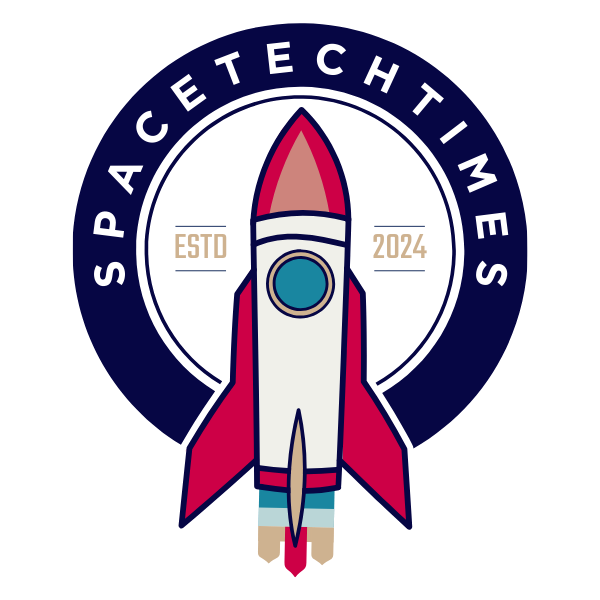India Unveils Secret Space Shield to Thwart Global Espionage by 2026
🛰️👁️ Surveillance Superpower? EU Pushes for 24/7 Satellite Feed to Capital Cities Amid Rising Threats
Too Fast to Fight: Hypersonic Weapons Force Nations to Weaponize the Sky with Satellites
Geostationary Gamble: China’s Shijian-25 Aims to Refuel a Decommissioned Satellite in Orbit
GPS Chaos in the Arctic Skies! Russian Electronic Warfare Hits NATO Airspace Over Norway and Finland
India Unveils Secret Space Shield to Thwart Global Espionage by 2026
🛰️👁️ Surveillance Superpower? EU Pushes for 24/7 Satellite Feed to Capital Cities Amid Rising Threats
Too Fast to Fight: Hypersonic Weapons Force Nations to Weaponize the Sky with Satellites
Geostationary Gamble: China’s Shijian-25 Aims to Refuel a Decommissioned Satellite in Orbit
GPS Chaos in the Arctic Skies! Russian Electronic Warfare Hits NATO Airspace Over Norway and Finland
India Unveils Secret Space Shield to Thwart Global Espionage by 2026
🛰️👁️ Surveillance Superpower? EU Pushes for 24/7 Satellite Feed to Capital Cities Amid Rising Threats
Too Fast to Fight: Hypersonic Weapons Force Nations to Weaponize the Sky with Satellites
Geostationary Gamble: China’s Shijian-25 Aims to Refuel a Decommissioned Satellite in Orbit
GPS Chaos in the Arctic Skies! Russian Electronic Warfare Hits NATO Airspace Over Norway and Finland
India Unveils Secret Space Shield to Thwart Global Espionage by 2026
🛰️👁️ Surveillance Superpower? EU Pushes for 24/7 Satellite Feed to Capital Cities Amid Rising Threats
Too Fast to Fight: Hypersonic Weapons Force Nations to Weaponize the Sky with Satellites
Geostationary Gamble: China’s Shijian-25 Aims to Refuel a Decommissioned Satellite in Orbit
GPS Chaos in the Arctic Skies! Russian Electronic Warfare Hits NATO Airspace Over Norway and Finland
Elon Musk Eyes Mars in 2025—Starship Shift Sparks Pause on Dragon and Moon Projects
Published on June 12, 2025 by Ruta Kulkarni

Starship Efforts Take Priority
SpaceX is now pouring its people and money into the Starship rocket, a giant vehicle standing nearly 400 feet tall. The company is shifting workers from other departments, including the Dragon spacecraft team, to help get Starship ready. Big changes are happening at SpaceX’s facilities in Texas, where Starship is being tested. There are also major investment plans for Florida, showing just how serious the company is about this Mars-focused project.

Rough Start for Starship Tests
This year has not gone smoothly for Starship. The vehicle suffered two back-to-back test explosions that scattered debris and disrupted airline traffic across Florida and the Caribbean. These explosions raised concerns, but SpaceX insists they have carefully studied the causes. In a statement, the company said they made technical improvements for future flights. SpaceX added that progress “won’t always come in leaps,” but they are determined to keep improving through trial and error.

NASA Moon Mission Delays
Along with aiming for Mars, SpaceX is building a special version of Starship for NASA’s Artemis program, set to land astronauts on the Moon in 2027. However, people close to the project say it is behind schedule. SpaceX must fix several technical issues before the rocket is ready. The company is under pressure to meet both NASA’s deadlines and its own goals for Mars, adding to the stress on the engineering teams.

‘Starfall’ and Military Interest
Some SpaceX staff were recently moved to a project named Starfall, which is tied to a U.S. military effort to move cargo quickly using rockets. The idea is to load equipment into a Starship, launch it into space, and land it in another part of the world within an hour. This concept could give the military fast, flexible transport. SpaceX has already received about $149 million from the Air Force to support this development.

Mars Dream with Optimus
Elon Musk wants to try an uncrewed Starship mission to Mars as soon as next year. One plan includes sending Optimus, a robot made by Tesla, to the red planet. Musk said on X that “Starship departs for Mars at the end of next year, carrying Optimus.” This would be SpaceX’s first major test to see if Starship can actually survive the long, harsh journey and land on Mars successfully with payload onboard.

Mars: Tough but Possible
Mars is about 140 million miles from Earth on average. It’s cold, dry, and has a thin atmosphere made mostly of carbon dioxide, with some nitrogen and argon. Even though humans can’t breathe the air, it may be possible to grow plants by compressing it. Mars has just 38% of Earth’s gravity, which means heavy objects are easier to lift. The length of a day on Mars is close to Earth’s, helping human adaptation.

Refuelling in Space
One of the biggest technical challenges for getting to Mars is fuel. Rockets usually carry all the fuel they need from the ground, but this makes them very heavy. SpaceX wants to solve this by using tanker versions of Starship to refuel the main rocket while it’s already in orbit. This “on-orbit refilling” could allow Starship to carry up to 100 tons to Mars. But so far, no fuel transfer in space has been attempted.

Mars Entry and Landing
When Starship reaches Mars, it will hit the atmosphere at a very high speed—around 7.5 kilometers per second. To slow down, it will rely on its heat shield, which is specially designed to handle multiple entries. Still, some wear and tear will happen during each landing. It’s like brake pads on a car—they work but get used up over time. This landing method is crucial for Starship’s success on Mars missions.

Mars Today
Mars is a rocky, red world full of dust storms and freezing temperatures. Although it may look lifeless, it has long captured human curiosity. Mars is the fourth planet from the Sun and one of Earth’s closest neighbors. It can be seen with the naked eye in the night sky. NASA has sent several robots, like the Perseverance rover, to study its surface. These missions help gather information to prepare for future human exploration.
Spacetech Times is a dedicated news portal focused on the latest developments in the space sector. It provides comprehensive coverage of stories related to space startups and space businesses, highlighting their innovations, challenges, and achievements. The portal serves as a valuable resource for enthusiasts, professionals, and stakeholders in the space industry, offering insights into the rapidly evolving landscape of space technology and exploration. Through in-depth articles, interviews, and analysis, Spacetech Times keeps its readers informed about the cutting-edge advancements and entrepreneurial ventures that are shaping the future of space.
Space Business
India Unveils Secret Space Shield to Thwart Global Espionage by 2026
🛰️👁️ Surveillance Superpower? EU Pushes for 24/7 Satellite Feed to Capital Cities Amid Rising Threats
Too Fast to Fight: Hypersonic Weapons Force Nations to Weaponize the Sky with Satellites
Geostationary Gamble: China’s Shijian-25 Aims to Refuel a Decommissioned Satellite in Orbit
Space Technology
GPS Chaos in the Arctic Skies! Russian Electronic Warfare Hits NATO Airspace Over Norway and Finland
Iran’s GPS-Free Missile Stuns the West! Qassem-Basir Bypasses Jamming, Signals New Era in Warfare
Japan’s 2024 Mega Earthquake Sent Shockwaves into Space—Shocking New Satellite Data Revealed
ITU Under Fire: World’s Space Traffic Cop Powerless to Stop Spectrum Grab by Superpowers
© All Rights Reserved with Spacetech Times
30 N, Gould Street, Sheridan, Wyoming, US 82801
Contactus@spacetechtimes.com
Call Us on 7620164413

